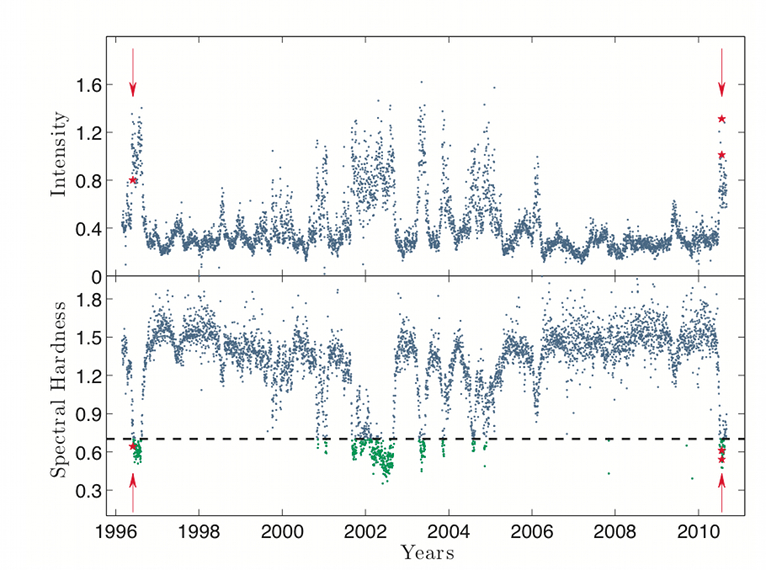
 Credit: Gou et al. (The Astrophysical Journal, 2011, Vol. 742, pg. 85; NASA)
Credit: Gou et al. (The Astrophysical Journal, 2011, Vol. 742, pg. 85; NASA)
The Spin of SpaceTime
Black Holes are produced when matter is crushed to infinite density, producing a "rip" in the space-time continuum surrounded by an "event horizon" within which no occurrence or characteristic can be communicated to the extant Universe. There are only three properties of black holes that can be directly measured, at least in principle: how massive they are; whether they possess electrical charge or not; and how quickly they are rotating. Admittedly trying to understand the spin of an object that has no spatial dimension is a difficult undertaking, but spinning black holes can have measurable effects on the spacetime around them, at least according to Einstein. The best-studied black hole is also the first black hole to be discovered, an X-ray bright binary star system called Cygnus X-1. The black hole in Cygnus X-1 is swallowing material from its companion, a bright, massive, normal star called HDE 226868, and as this material spirals onto the black hole's event horizon (and effectively leaves our Universe), it heats up and generates X-rays. Astronomers have now used improved measures of the distance and mass of the black hole in Cygnus X-1, along with X-ray observations from the Rossi X-ray Timing Explorer, the Advanced Satellite for Cosmology and Astrophysics, and the Chandra X-ray Observatory to determine a precise value of the spin of Cyg X-1's black hole. The graph above shows the X-ray behavior of Cyg X-1 as measured by RXTE's All Sky Monitor, and the red stars indicate those rare times when the spin period of Cyg X-1's black hole can be determined. Astronomers have found the surprising result that the black hole in Cyg X-1 is spinning nearly as rapidly as the laws of physics allow.
Published: November 28, 2011
<
HEA Dictionary ● Archive
● Search HEAPOW
● Other Languages
● HEAPOW on Facebook
● Download all Images
● Education ● HEAD
>

Each week the HEASARC
brings you new, exciting and beautiful images from X-ray and Gamma ray
astronomy. Check back each week and be sure to check out the HEAPOW archive!
Page Author: Dr. Michael F. Corcoran
Last modified Monday, 26-Feb-2024 17:21:09 EST


